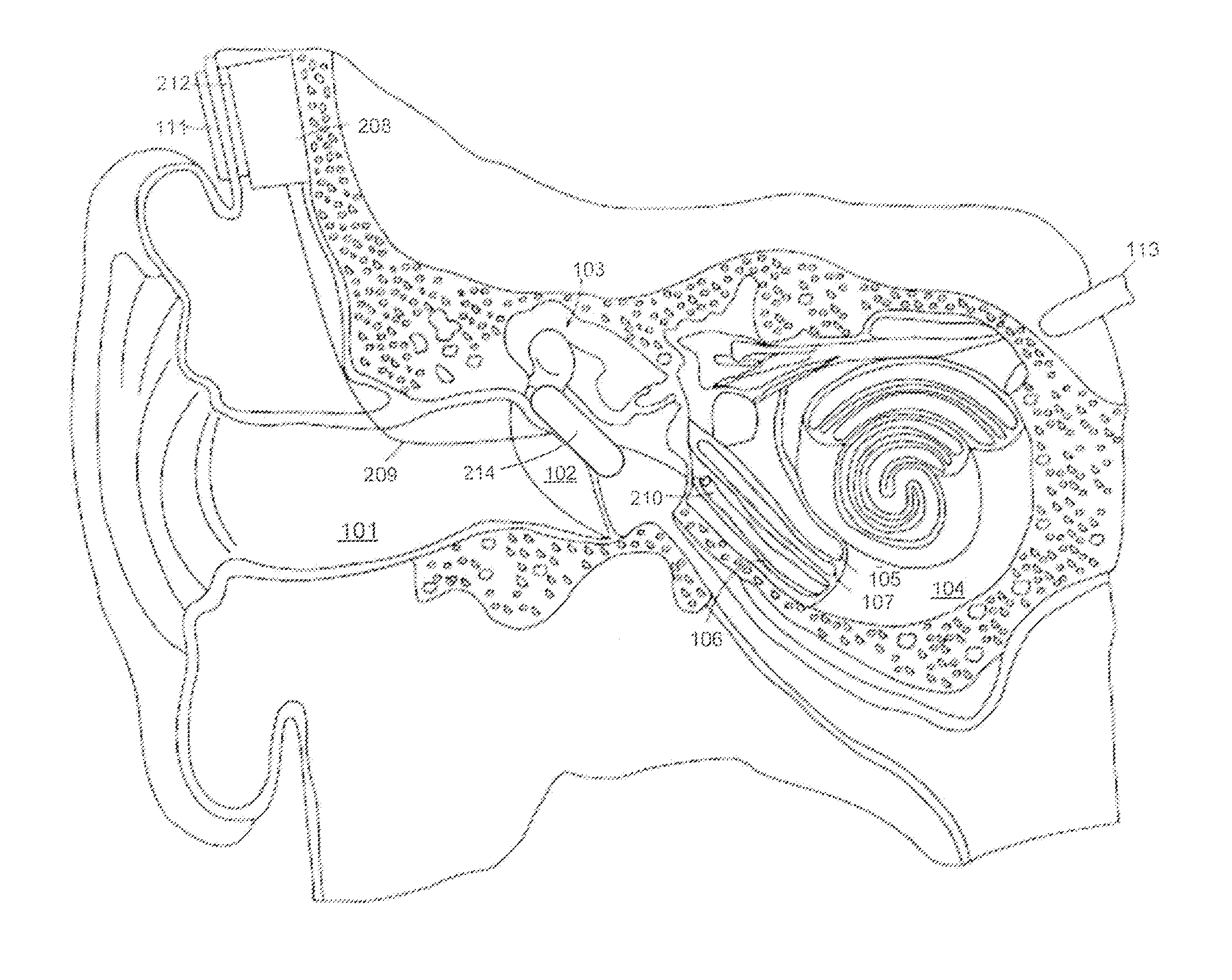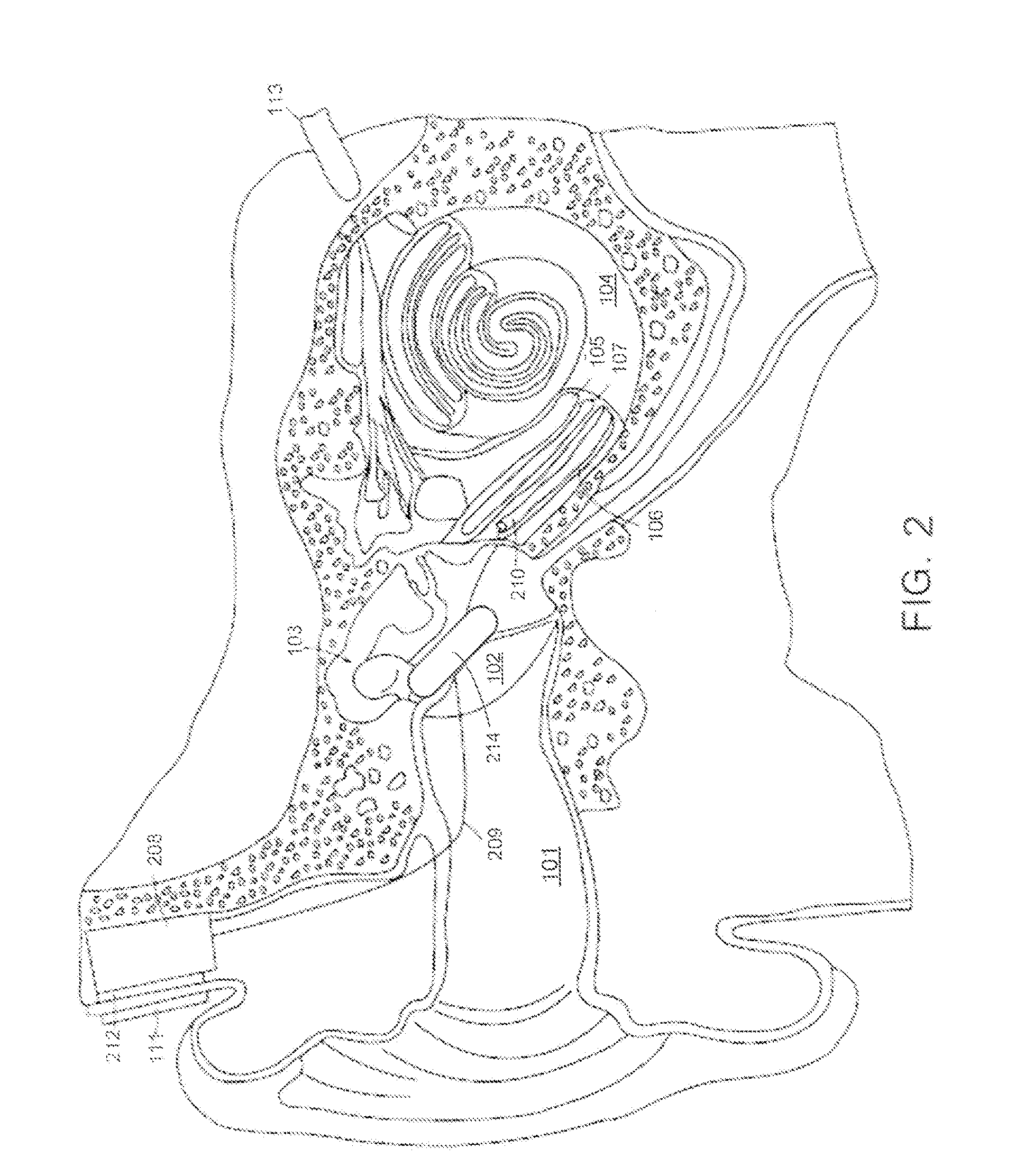Tinnitus Suppressing Cochlear Implant
a cochlear implant and tinnitus technology, applied in the field of tinnitus suppressing cochlear implants, can solve the problems of tinnitus, cochlear implants are normally not considered, and the use of cochlear implants is not considered
- Summary
- Abstract
- Description
- Claims
- Application Information
AI Technical Summary
Benefits of technology
Problems solved by technology
Method used
Image
Examples
Embodiment Construction
[0022] As used herein, the term “hearing implant” includes cochlear implants (CI), brainstem implants, and middle ear implants (MEI).
[0023] When stimulating, hearing implants can suppress some forms of tinnitus such as peripheral origin-tinnitus, i.e. tinnitus connected to hearing problems. Both mechanical (acoustic) and electrical stimulation have been found to provide such benefit. Specifically, unilateral tinnitus resulting from unilateral cochlear profound sensory-neural hearing loss (SNHL) can be treated with cochlear implantation, which also typically improves the overall quality of hearing in a significant way. As explained above, unilateral deafness has not previously been an indication for a cochlear implant. Thus, embodiments of the present invention include a cochlear implant that restores hearing by changing cortical activity by electrical stimulation of the auditory cortex or auditory nerve. Tinnitus suppression is realized by use of comparatively low level stimulation...
PUM
 Login to View More
Login to View More Abstract
Description
Claims
Application Information
 Login to View More
Login to View More - R&D
- Intellectual Property
- Life Sciences
- Materials
- Tech Scout
- Unparalleled Data Quality
- Higher Quality Content
- 60% Fewer Hallucinations
Browse by: Latest US Patents, China's latest patents, Technical Efficacy Thesaurus, Application Domain, Technology Topic, Popular Technical Reports.
© 2025 PatSnap. All rights reserved.Legal|Privacy policy|Modern Slavery Act Transparency Statement|Sitemap|About US| Contact US: help@patsnap.com



